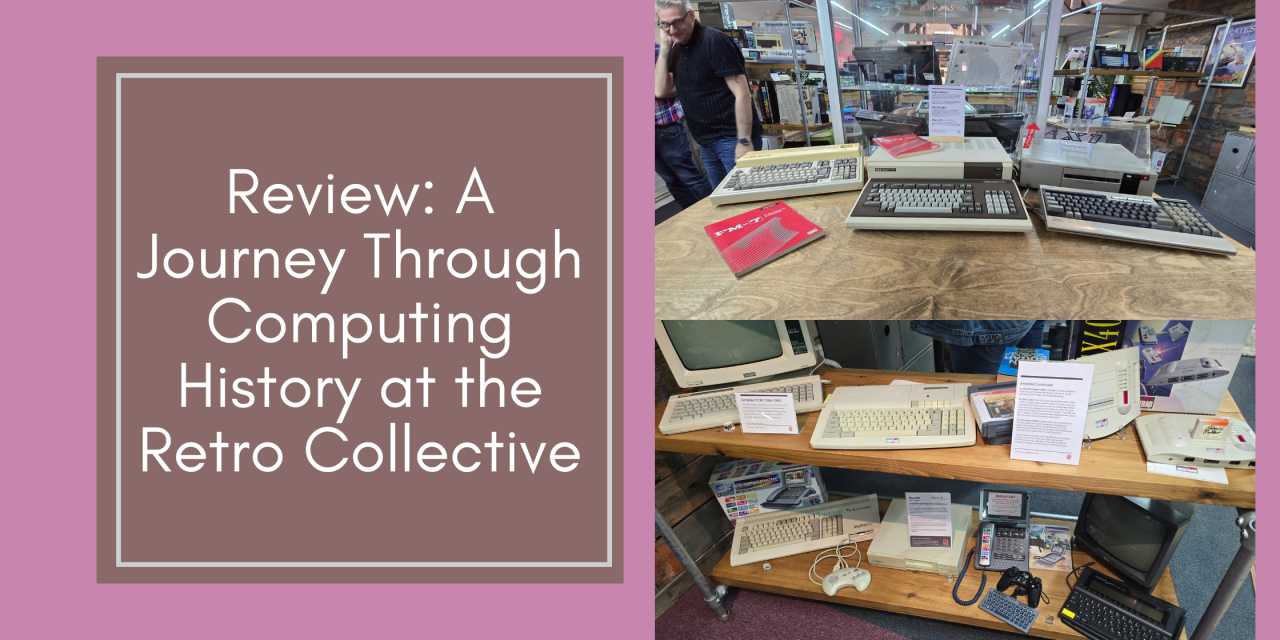Yesterday, I had the absolute pleasure of visiting the Retro Collective in Stroud with my dear friends Wendy and Simon, and honestly, I’m still buzzing from the experience. As someone who’s spent years in the cyber security industry and has always been fascinated by the evolution of technology, this place felt like stepping into a time machine that transported me through the entire history of computing and gaming.
For those who haven’t heard of the Retro Collective, it’s a remarkable vintage computing museum housed in an 18th-century mill in Stroud. This isn’t your typical “look but don’t touch” museum experience. Instead, it’s a hands-on celebration of over 50 years of computing and gaming history, where you can actually interact with the machines that shaped our digital world. The setting itself is quite magical – there’s something wonderfully appropriate about housing these technological marvels in a building that represents an earlier era of industrial innovation.
Meeting the Passionate People Behind the Magic
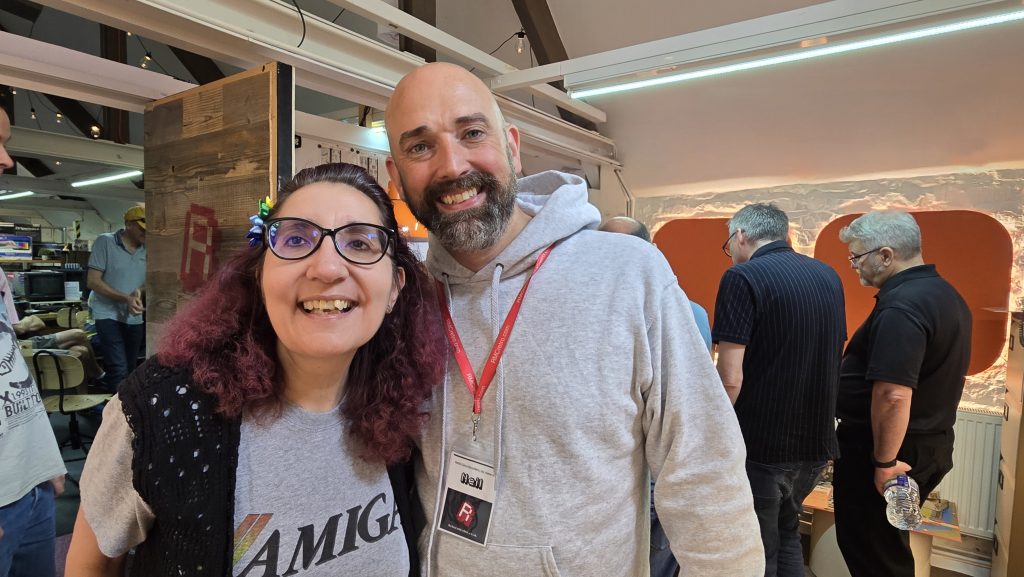 The highlight of my visit was undoubtedly meeting Neil Thomas, who founded this incredible museum. His passion for preserving computing history is absolutely infectious, and you can tell that every single machine in the collection has been lovingly restored and maintained. What struck me most about Neil was his genuine enthusiasm for sharing these technological treasures with visitors. He didn’t just show us the exhibits; he brought them to life with stories about how each machine contributed to the computing revolution we’re still living through today. Neil’s dedication to this project is truly remarkable.
The highlight of my visit was undoubtedly meeting Neil Thomas, who founded this incredible museum. His passion for preserving computing history is absolutely infectious, and you can tell that every single machine in the collection has been lovingly restored and maintained. What struck me most about Neil was his genuine enthusiasm for sharing these technological treasures with visitors. He didn’t just show us the exhibits; he brought them to life with stories about how each machine contributed to the computing revolution we’re still living through today. Neil’s dedication to this project is truly remarkable.
We were also fortunate to spend time with Jason and Holly, both of whom demonstrated an impressive depth of knowledge about the collection. I talked to Jason in the dev area where he explained the significance of each piece, and I was struck by how much thought has gone into not just preserving these machines but making them accessible and meaningful to visitors. His ability to connect the dots between these vintage systems and modern technology really helped put everything into perspective.
Their expertise really enhanced our visit, and Jason’s insights into the hardware evolution were particularly fascinating. Both clearly share Neil’s passion for computing history, and their enthusiasm made the entire experience even more enjoyable.
The Overwhelming Experience
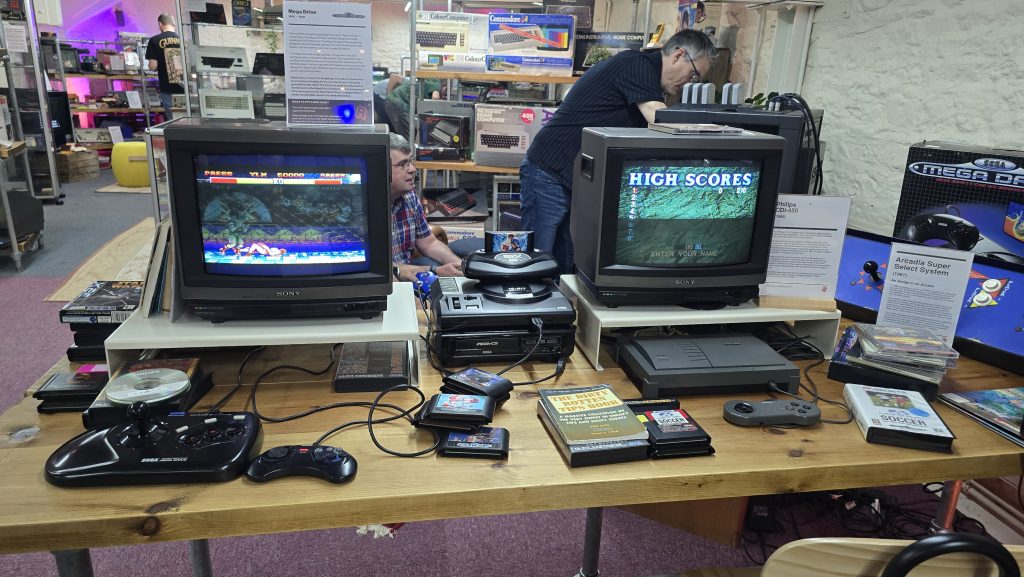 I have to be honest – walking into the museum for the first time was genuinely overwhelming in the best possible way. There were just so many incredible machines to see and experience that I hardly knew where to start. Every corner seemed to reveal another piece of computing history that I wanted to explore in detail. As someone who geeks out over technology, I found myself constantly torn between wanting to spend ages with each exhibit and wanting to see everything the museum had to offer.
I have to be honest – walking into the museum for the first time was genuinely overwhelming in the best possible way. There were just so many incredible machines to see and experience that I hardly knew where to start. Every corner seemed to reveal another piece of computing history that I wanted to explore in detail. As someone who geeks out over technology, I found myself constantly torn between wanting to spend ages with each exhibit and wanting to see everything the museum had to offer.
The sheer breadth of the collection is staggering. From the earliest home computers to gaming consoles, arcade machines, peripherals, and everything in between, it’s a comprehensive journey through technological evolution. I kept finding myself stopping to examine something that caught my eye, only to spot something equally fascinating just a few feet away. It’s the kind of place where you could easily spend an entire day and still feel like you’ve only scratched the surface.
Highlights from the Collection
The Magnavox Odyssey – Where It All Began
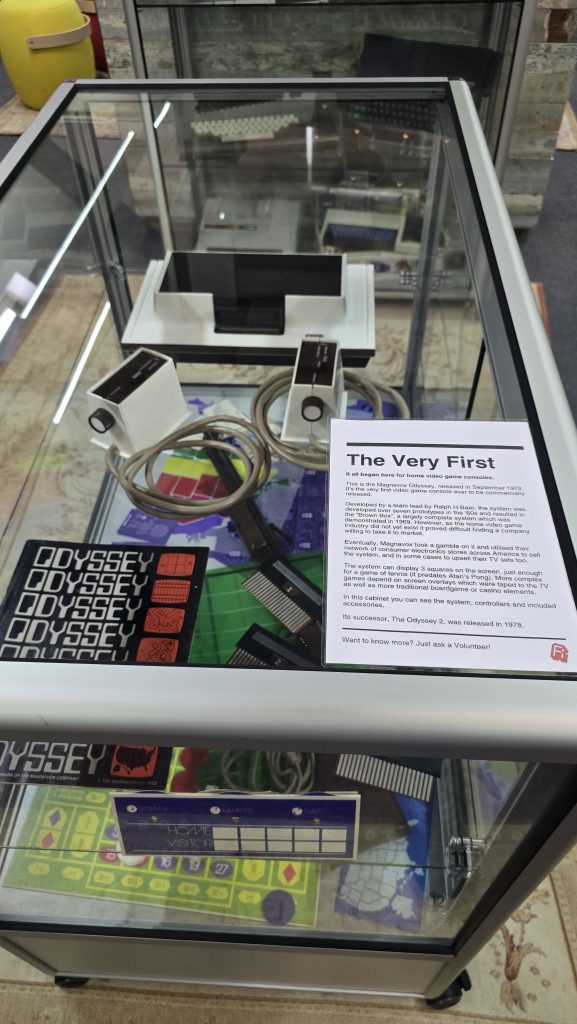 One of the absolute standouts for me was seeing the original Magnavox Odyssey, the very first commercial home video games console from 1972. Standing in front of this machine, I was struck by how this simple brown box essentially kicked off the entire home gaming industry. It’s incredible to think that this unassuming device, with its basic overlays and simple controls, was the foundation for everything that followed in the gaming world.
One of the absolute standouts for me was seeing the original Magnavox Odyssey, the very first commercial home video games console from 1972. Standing in front of this machine, I was struck by how this simple brown box essentially kicked off the entire home gaming industry. It’s incredible to think that this unassuming device, with its basic overlays and simple controls, was the foundation for everything that followed in the gaming world.
What’s particularly fascinating about the Odyssey is how primitive it seems by today’s standards, yet how revolutionary it was for its time. The console doesn’t even have sound – just simple dots moving around the screen – but it represented a massive leap forward in bringing interactive entertainment into people’s homes. As someone who’s witnessed the evolution of cyber security alongside gaming technology, I found myself reflecting on how these early systems were so beautifully simple compared to the complex, interconnected gaming ecosystems we protect today.
The MB Big Trak – A Peripheral Pioneer
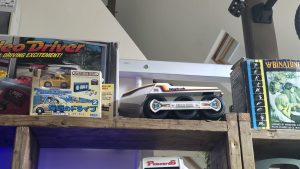 Another machine that really caught my attention was the MB Electronics Big Trak, sometimes styled as Bigtrak, was a programmable electronic toy vehicle that first appeared in 1979 in the United States and in 1980 in the United Kingdom, released by Milton Bradley. It was a six-wheeled plastic vehicle designed with a futuristic space rover look. On top of the vehicle was a 24-button keypad that allowed children to enter a sequence of commands such as moving forward, turning left or right, and firing its “photon beam”, which was represented by a small light bulb in the front.
Another machine that really caught my attention was the MB Electronics Big Trak, sometimes styled as Bigtrak, was a programmable electronic toy vehicle that first appeared in 1979 in the United States and in 1980 in the United Kingdom, released by Milton Bradley. It was a six-wheeled plastic vehicle designed with a futuristic space rover look. On top of the vehicle was a 24-button keypad that allowed children to enter a sequence of commands such as moving forward, turning left or right, and firing its “photon beam”, which was represented by a small light bulb in the front.
Rather than being operated like a remote-controlled car, Big Trak worked by programming a set of instructions into its memory, up to sixteen steps at a time. Once the programme was complete, pressing the “GO” button made the vehicle carry out the commands in sequence. In the UK there was also an optional accessory called the Big Trak Transport, a dump trailer that could be programmed to release its load at the right point in the sequence.
Although relatively simple by modern standards, the Big Trak introduced many children to the idea of programming and logical sequencing long before home computers became widespread. With its distinctive styling and futuristic design, it went on to achieve cult status as one of the most memorable electronic toys of the 1980s.
It caught my eye because when I was a child, I wanted one but was told I couldn’t have one because it “wasn’t a toy for girls.” I will scour Ebay for one to add to my collection in my own Retro Room, which is complete with a TARDIS door.
The Replica WH Smiths Gaming Section
 Tucked away within The Cave lies a lovingly crafted recreation of a 1980s WH Smith outlet. Neil Thomas, the museum’s founder, built this nostalgic nook to evoke the vivid memories of the childhood weekends he spent cycling into town, pocket money in hand, browsing the latest games on display under the familiar beige and dark brown branding, and clutching those iconic WH Smith carrier bags. Every detail has been painstakingly recreated from the “Rubik’s Cube” style logo to the stock-style shelving and even a manual price-sticker gun, all contributing to the uncanny sense of stepping back in time.
Tucked away within The Cave lies a lovingly crafted recreation of a 1980s WH Smith outlet. Neil Thomas, the museum’s founder, built this nostalgic nook to evoke the vivid memories of the childhood weekends he spent cycling into town, pocket money in hand, browsing the latest games on display under the familiar beige and dark brown branding, and clutching those iconic WH Smith carrier bags. Every detail has been painstakingly recreated from the “Rubik’s Cube” style logo to the stock-style shelving and even a manual price-sticker gun, all contributing to the uncanny sense of stepping back in time.
What elevates the experience beyond mere visual nostalgia is the interactive twist. Every game on the wall marked with a red sticker can be scanned using a barcode reader, which instantly loads the title onto a TV built into the wall, with no cash required. This clever setup, powered by a MiSTer multisystem, turns the shop into a physical game-selection frontend, allowing visitors to relive that moment of decision-making with an instant payoff. It’s a delightful, immersive way to teach younger generations and even surprise older ones about how gaming was discovered in bricks-and-mortar stores before the age of online storefronts
The KORG Synthesiser in the Dev Area
Another highlight was having a go on the Korg synthesiser that was situated in the dev area with an Atari ST. Back in the day the Atari ST was the go-to machine for mixing music and for music production, and it was brilliant to have a play on the Korg. I couldn’t come up with much though except for the theme tune to “Eastenders” to my shame, which caused my friend Wendy to be in fits of laughter.
I have a Yamaha keyboard in our retro room at home, so having a play around on the Korg has inspired me to try and learn how to play the keyboard a bit better.
Gaming History Comes Alive
The machines in the Retro Cave were absolutely incredible. Being able to play on original computers from the golden age of gaming and computing was like stepping back into my youth. These machines were the cutting edge of entertainment technology when they first appeared and experiencing them in their original form rather than through emulation really highlights the craftsmanship that went into both the hardware and software.
What struck me most about these machines was how different the gaming experience was back then. The sound, the slowness, the stretched screens and the pixellated graphics seemed space age back then, but practically prehistoric today. Each machine and console were a standalone experience, carefully crafted and balanced without the ability to patch or update after release. Developers had to get everything right the first time, which led to some incredibly polished and memorable gaming experiences.
The Home Computing Evolution
The collection of home computers was equally impressive, and while there were machines such as the Commodore 64, the ZX Spectrum, and the BBC Micro, all of which I have in my own Retro Room, there were also various Apple computers and machines such as the Atari ST and the Acorn which I don’t have. To have these machines all in one place really illustrated how rapidly the industry evolved during the personal computer revolution. Each machine represented different approaches to bringing computing power into people’s homes, and you can see how different design philosophies and technical constraints shaped these early systems.
What’s particularly interesting from a cyber security perspective is how simple these early machines were. Security wasn’t really a consideration because they weren’t networked in the way we understand today. Users had complete control over their machines, and the biggest security concern was probably making sure your floppy disks didn’t get corrupted. It’s quite a contrast to the complex threat landscape we navigate today.
The Broader Computing Context
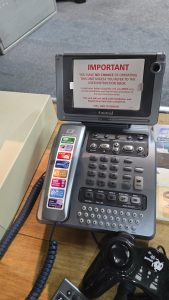 As I wandered through the exhibits, I couldn’t help but think about how these machines laid the groundwork for the entire digital ecosystem I’ve spent my career protecting. Every cyber security concept we work with today from user authentication to data protection to network security has its roots in the evolution represented by these machines.
As I wandered through the exhibits, I couldn’t help but think about how these machines laid the groundwork for the entire digital ecosystem I’ve spent my career protecting. Every cyber security concept we work with today from user authentication to data protection to network security has its roots in the evolution represented by these machines.
One thing I was stunned to see was an Amstrad e-mailer phone, something I had in my home office in the year 2000 when it came out! At the time it seemed positively space age to be able to use a phone to send email, which today is something we take for granted. It also felt like 2 minutes ago to me that I had this machine, yet 25 years have passed by which is insane. I couldn’t resist tagging my ex-wife Amy on Facebook with a photo I took of it, as it was Amy who got the Amstrad e-mailer phone for my home office back then. Thanks to her, we had all the latest tech and gadgets in our house.
The progression from isolated single-user systems to the interconnected world we live in today is remarkable when you see it laid out chronologically. These early machines were the building blocks and understanding how they worked helps provide context for the security challenges we face today. When everything was standalone, security was largely about physical access and data integrity. As we connected these systems together, we created the complex threat landscape that keeps cyber security professionals like me busy.
A Living, Breathing Retro Computing Collection
What I really appreciated about the Retro Collective is that it’s not a static display. The machines aren’t just sitting there looking pretty – they’re functional, working examples of computing history that you can actually use and experience. There’s something profound about being able to use a machine the way it was intended rather than just reading about it or seeing it behind glass.
The hands-on approach really brings these machines to life. You can feel the different keyboard mechanisms, hear the distinctive sounds each system makes, and experience the user interfaces that seemed so advanced at the time. It’s one thing to know intellectually that early computers had limited memory and processing power; it’s quite another to actually wait for a program to load from cassette tape and feel the constraints that developers worked within.
The Educational Value of Retro Computing
I cannot recommend this experience highly enough, because understanding where our industry came from provides crucial context for where we’re heading. These machines represent the foundations upon which our entire digital world is built and experiencing them firsthand offers insights you simply can’t get from reading about them in textbooks.
The museum also does an excellent job of explaining the context around each machine. It’s not just about the technology itself, but about the people who created it, the challenges they faced, and the impact these innovations had on society. This broader perspective is really valuable for understanding how technology shapes and is shaped by human needs and creativity.
More Than Just Retro Computing Machines
The Retro Collective isn’t just preserving machines; it’s preserving the story of human innovation and the relentless drive to push technological boundaries. In an era where we’re grappling with AI ethics, quantum computing, and the ever-evolving cyber security landscape, there’s real value in understanding the pioneering spirit that got us here in the first place.
What really comes through when you visit is the passion and creativity that drove these early innovations. These weren’t massive corporate projects with unlimited budgets, many of these machines were created by small teams or even individuals who had a vision for what computing could become. That entrepreneurial spirit and willingness to experiment with new ideas is something we can still learn from today.
Planning Your Visit to the Retro Collective
If you’re planning a visit, I’d strongly recommend allowing plenty of time to really explore and engage with the exhibits. The museum opens at 11.00am and we had until 2.00pm to take it all in and could easily have stayed much longer. The volunteers and staff are incredibly knowledgeable, so don’t hesitate to ask them questions. Their enthusiasm for sharing their knowledge really enhances the experience.
The museum regularly updates its displays, so there’s always something new to discover. I’m definitely planning to return because I know there were things I missed on this visit. Check their website for the latest opening times and special events. Their YouTube channels also provide excellent context for the collection, and I’d suggest having a browse before your visit to get the most out of the experience.
The Perfect Day Out
The location in Stroud is lovely as well, making it perfect for a day trip. The 18th-century mill setting adds to the charm, and there are plenty of other things to see and do in the area if you want to make a full day of it. We certainly did, and it was wonderful to share this experience with Wendy and Simon, who were just as fascinated by the collection as I was.
Final Thoughts
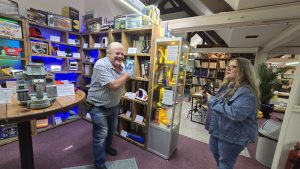 Leaving the Retro Collective yesterday, I felt a renewed appreciation for the technological pioneers who made our modern digital world possible. It’s places like this that remind us that behind every algorithm, every piece of software, and every cyber security protocol, there’s a rich history of human creativity and determination.
Leaving the Retro Collective yesterday, I felt a renewed appreciation for the technological pioneers who made our modern digital world possible. It’s places like this that remind us that behind every algorithm, every piece of software, and every cyber security protocol, there’s a rich history of human creativity and determination.
The experience also reminded me why I fell in love with computing and technology in the first place when I was a child. From the moment I got my very first home computer, a Texas Instruments TI/499, I was hooked, and I’ve made a whole career out of computing. As time goes on, it is easy to lose sight of the wonder and excitement that computing can inspire. Spending time with these vintage machines brought back that sense of possibility and curiosity that drives innovation.
Thank you Neil, Jason, Holly, and the entire team at the Retro Collective for preserving this incredible slice of computing history and for making it accessible to visitors like us. Their dedication to maintaining these machines and sharing their knowledge with visitors is truly admirable. It really was a brilliant day out, and I’m already planning my next visit in the new year because I know there’s so much more to explore and discover.
For anyone with even a passing interest in technology, computing history, or just the ingenuity of human innovation, the Retro Collective is an absolute must-visit destination. It’s a reminder of how far we’ve come and an inspiration for where we might go next.
To see all the photos I took during my visit, visit this Flickr Album.
Links to Follow the Retro Collective and The Cave
YouTube – The Retro Collective www.youtube.com/@TheRetroCollective
YouTube – This Week In Retro www.youtube.com/@ThisWeekinRetro
Visit The Retro Collective retrocollective.co.uk
BlueSky – The Retro Collective bsky.app/profile/retrocollective.co.uk
BlueSky – The Cave bsky.app/profile/theretrocave.com
BlueSky – Arcade Archive bsky.app/profile/arcadearchive.co.uk
X – The Retro Collective x.com/RetCollective
X – The Cave x.com/visitthecave
X – Arcade Archive twitter.com/arcade_archive
Instagram – The Retro Collective instagram.com/retcollective
Instagram – The Cave instagram.com/visitthecave
Instagram – Arcade Archive instagram.com/arcadearchive
FB – The Retro Collective facebook.com/p/Retro-Collective
FB – The Cave facebook.com/visitthecave
FB – Arcade Archive facebook.com/arcadearchive




